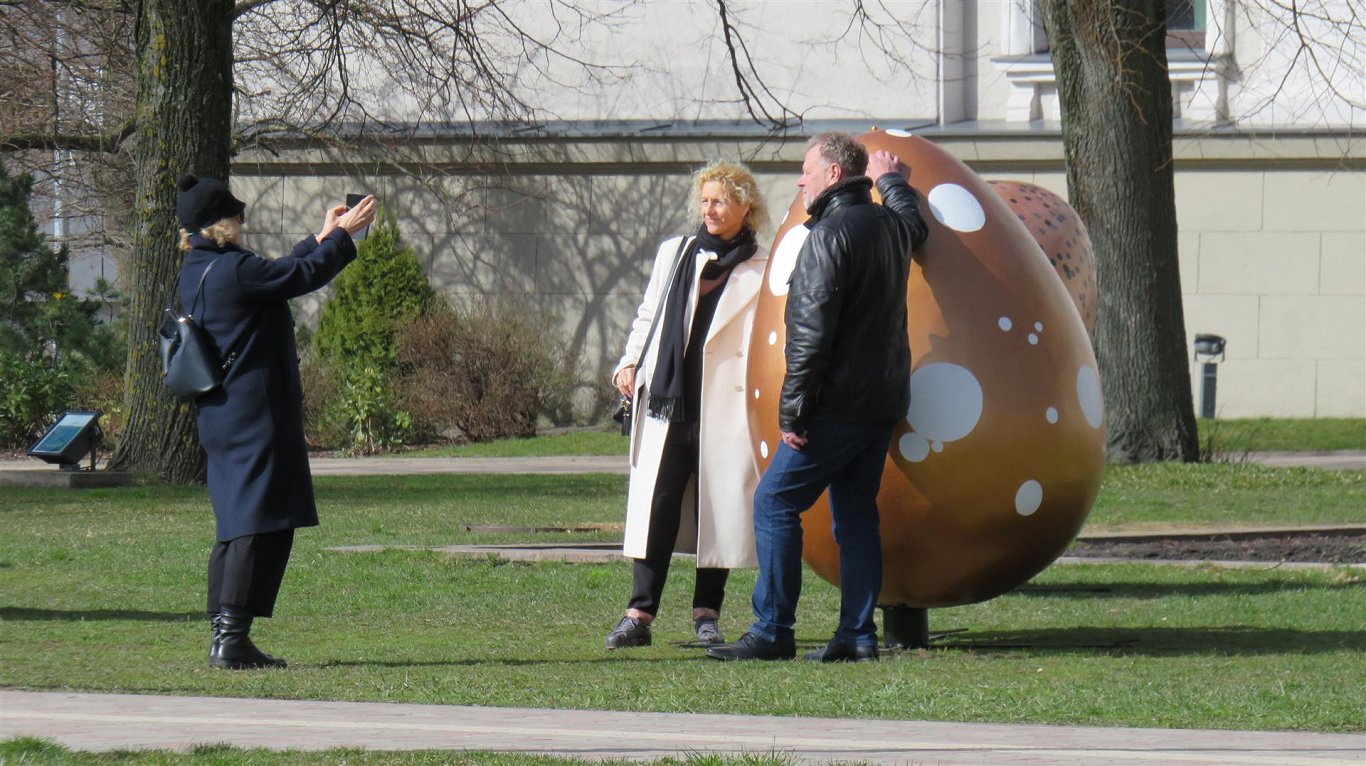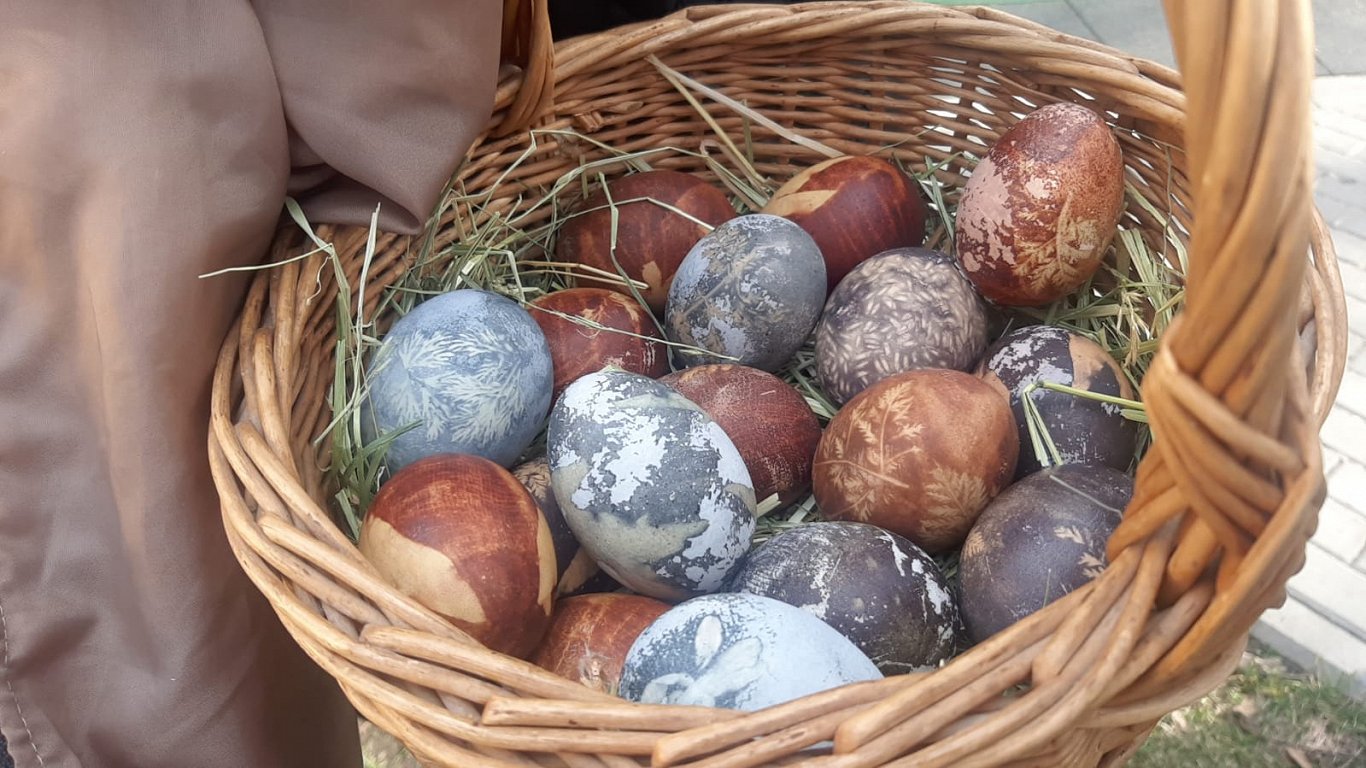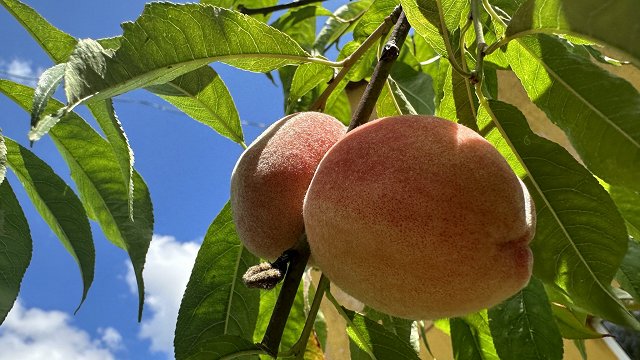Our colleagues on the LSM Latvian language service have scored big hits this week with their egg stories – they were even cited in detail during national weather news – so if you are curious as to what the fuss is all about, here is their account of various different methods of achieving egg coloration using materials commonly found around the house.
Onion skins
Put as many onion skins as possible in a saucepan, pour in cold water and cook for 10 minutes to increase the color of the liquid. You can boil the night before use, then leave the liquid to color well, boil it again the next day, add salt, add vinegar and paint the eggs.
Tea
Those who have not been diligent onion peelers this year can make up for it by painting eggs in black tea. The decoction is made in the same way as with onion peel, adding salt and vinegar at the end. The amount of tea can be varied as desired - the more used, the stronger the color. You can also try coloring using different herbal teas.
Blueberries, beets, spinach
If a jar of blueberry jam or a bottle of juice has accumulated in the pantry, you can make a decoction that will allow you to get bluish eggs. Mix the jam or juice with water and bring to a boil. When the decoction has reached room temperature, put the eggs inside, boil and cool. Eggs can also be painted in beetroot juice and spinach decoction.
Red cabbage
In the spring, more cabbage begins to appear in stores. If you have an uncooked purple cabbage head stuck in the refrigerator, it will also be a great raw material for painting eggs. Cut the cabbage up, pour over water, add vinegar, cook for 20 minutes, leave to infuse to intensify the color. Try painting both white and brown eggs in a decoction of purple cabbage!
Rags
Dyeing with rags is quite simple - choose colored pieces of cloth, which usually stain the water during washing, wrap eggs in them, put them in clean water, to which nothing else is added. Boil like onion peels. Any pattern will remain of the color of the fabric on the egg. Old silk ties are particularly prized for this purpose.
Wrapping papers
You can also use different colored papers to paint eggs. Candy wrappers are good. The eggs are wrapped in them, tied and boiled in clean water. The egg will be stained by the wrappers.
Various other ideas
Eggs can be painted with chemical paints. Children will enjoy painting already boiled eggs with gouache and watercolors, various pencils and felt-tip pens, only then you can use these eggs for a beautiful decor and a gift, but such painted eggs should not be eaten.
Eggs can also be decorated with stickers, beautifully wrapped with colored stripes and ribbons, "seated" in baskets and dishes made of paper. Moss or twigs can be used to make nests to put eggs in.

Extra tips
You must first choose eggs - brown or white. It is possible that a decoction of onion peel will make the brown eggs more beautiful, but the smoky blue color of blueberries will work well when painting white eggs.
Medium-sized eggs are kept in boiling water for no more than 10 minutes, because eggs are also intended for eating, not just for beauty. To make the color brighter, it is recommended to add salt and vinegar to the water. It is recommended to boil the eggs in water for about four or five minutes, then stop cooking and leave them in hot water for another five to seven minutes to make the color brighter.
Patterns can be made by wrapping green leaves, colored flowers, oatmeal, pasta, groats or something else around the egg. Eggs can be wrapped with thread, ribbon or colored spirals to create patterns. The main principle is to keep the attached thing close to the egg and to prevent the colored liquid from getting under it. Thread, tape, gauze or socks can be used for this, the main thing is that the material is not thick and fits snugly to the egg.
If eggs are painted by putting them in a decoction without wrapping, a pattern may be scratched into the shell after removal with a needle, knife tip or other sharp object.
When the eggs are painted, they can be smeared with a piece of lard or a cloth dampened with oil to make the eggs shiny and the pattern stand out better.
For an egg master class, see this video!






















